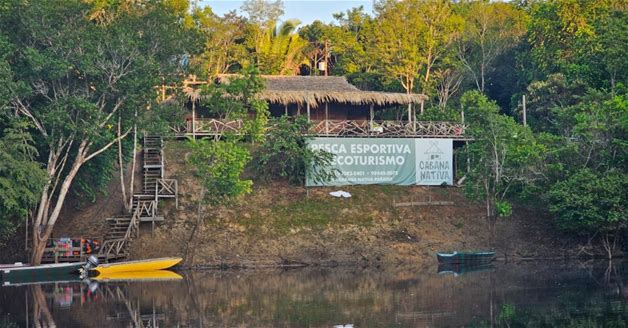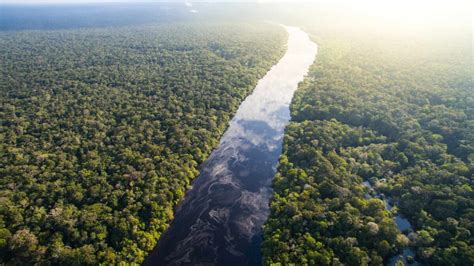
The Vital Role of the Amazon
The Amazon rainforest is often referred to as the "lungs of the Earth" due to its significant role in producing oxygen and storing carbon dioxide. This immense forest not only helps regulate the global climate but also provides vital habitats for countless species. Over 10% of all known species on our planet reside within its confines, making it a biodiversity hotspot. The intricate relationships among plants, animals, and microorganisms contribute to ecosystem stability and resilience. Furthermore, the Amazon serves as a crucial resource for indigenous communities who rely on its biodiversity for their cultural practices and sustenance.
“Protecting the Amazon is not just about conserving a forest; it’s about preserving life on Earth.”
To grasp the full scope of its importance, consider that healthy rainforest ecosystems regulate water cycles, impacting rainfall patterns across countries far beyond its borders. As such, safeguarding this natural treasure is imperative for environmental balance and humanity’s future. For more insights into ongoing conservation efforts and their challenges, you can explore additional information from trusted sources: e360and Trostisar blog.

Biodiversity Hotspot of the Amazon
The Amazon rainforest is renowned for its staggering biodiversity, being home to approximately 40,000 plant species, 1,300 bird species, and countless insects and mammals. This rich variety of life supports complex ecosystems that play a crucial role in stabilizing the Earth’s climate and enhancing its overall health. Additionally, many indigenous communities rely on these diverse species for their livelihoods and cultural practices. However, this vibrant biodiversity faces significant challenges. The destruction of habitats due to agricultural expansion and illegal logging diminishes species’ populations and drives extinction rates higher. As these trends continue, the ecological balance of the region is threatened, underscoring the need for immediate action to protect this invaluable resource. For more insights on this remarkable ecosystem, visit Wikipediaor Britannica.
Threats from Deforestation
Deforestation poses a significant threat to the integrity of the Amazon rainforest and its unique ecosystems. The primary drivers of this destructive practice include agriculture, logging, and infrastructure development. According to studies, around 17% of the Amazon rainforest has been lost over the last 50 years, leading to a dramatic decline in biodiversity. Species that depend on this habitat for survival face extinction as their homes are destroyed. Table 1 illustrates the main causes of deforestation in the region:
| Cause of Deforestation | Percentage Impact |
|---|---|
| Agriculture | 70% |
| Logging | 20% |
| Infrastructure | 10% |
Continued deforestation not only disrupts local flora and fauna but also contributes to broader environmental issues such as climate change. The removal of trees reduces carbon sequestration capabilities, exacerbating global warming effects. To better understand the ecological importance of the Amazon and its current challenges, one can explore further resources such as National Geographic’s educational page on the Amazon rainforestor Travel Babbo’s insights on visiting the Amazon with kids. Urging action towards halting deforestation is crucial for preserving this vital resource for future generations.

Impact of Climate Change
Climate change poses a significant threat to the Amazon rainforest, exacerbating existing challenges and threatening its delicate ecosystems. Rising temperatures can disrupt the balance of species, leading to shifts in flora and fauna distributions. Increased frequency and intensity of droughts affect water availability, hindering plant growth and increasing the susceptibility of trees to pests and diseases. Moreover, higher temperatures can alter precipitation patterns, resulting in unpredictable weather conditions that impact not only the rainforest but also the indigenous communities relying on its resources. As documented in various studies, these climatic shifts further accelerate deforestation processes, creating a vicious cycle that jeopardizes biodiversity. To better understand these dynamics, resources detailing climate impacts can be found hereand here. Addressing climate change is thus critical in any conservation strategy aimed at preserving the Amazon’s unique ecosystems.

Conservation Efforts Needed
Conservation of the Amazon rainforest is crucial due to its irreplaceable contribution to global biodiversity and climate stability. Strategies such as establishing protected areas and promoting sustainable land use practices are essential in mitigating the impact of deforestation. Collaborative initiatives between governments, local communities, and international organizations can enhance conservation efforts by addressing socio-economic factors that drive land exploitation. For instance, supporting eco-friendly tourism can provide economic incentives for local populations to preserve their natural environment rather than destroy it. Educational programs that raise awareness about the ecological significance of the Amazon can also empower communities to engage in preservation actively. Vital resources, such as the podcast on "The Simple Economics of Saving the Amazon Rainforest," offer insights into effective conservation strategies that can be implemented. Additionally, visiting places like Amazon Rainforestcan foster an appreciation for this unique ecosystem while generating funds essential for ongoing conservation projects.
Current State of the Amazon
The Amazon rainforest currently faces a precarious balance between its rich biodiversity and the escalating pressures of human activity. As the world’s largest tropical rainforest, it houses countless species and supports indigenous communities, yet reports indicate that significant portions are being lost annually due to logging and agricultural expansion. Areas within the Amazon are becoming increasingly fragmented, disrupting habitats and affecting wildlife that rely on continuous forest cover. Moreover, the impacts of climate change are intensifying, leading to altered rainfall patterns and higher temperatures that threaten the delicate ecosystems. Conservationists highlight that urgent action is required to mitigate these threats and restore damaged regions to ensure the survival of this vital global resource. The challenges faced by the Amazon serve as a crucial reminder of the interconnectedness between human activities and environmental health.
Future of Amazon Ecosystems
The future of Amazon ecosystems hinges on multifaceted conservation efforts that address the ongoing threats of deforestation and climate change. As vast stretches of the rainforest are cleared for agriculture and urban development, the intricate web of life that thrives within this unique biome faces unprecedented disruption. Additionally, changing climate conditions are altering rainfall patterns and increasing the frequency of droughts, further challenging the survival of countless species. However, there is a growing recognition of the need for sustainable practices that protect these vital ecosystems. Collaborations between local communities, governments, and conservation organizations are becoming increasingly essential to develop strategies that balance human needs with environmental preservation. These efforts can lead to innovative solutions such as agroforestry and eco-tourism that promote biodiversity while providing economic benefits to local populations. Effectively implementing these initiatives can ultimately shape a more resilient future for the Amazon rainforest and its myriad inhabitants.
Human Activities and Rainforest Health
Human activities have a profound impact on the health of the Amazon rainforest. Agricultural expansion, particularly for beef and soy production, leads to significant deforestation, disrupting the delicate balance of this diverse ecosystem. Moreover, logging—both legal and illegal—further exacerbates habitat loss, affecting countless species that depend on these environments for survival. The introduction of road networks facilitates not only transportation but also unregulated access to previously remote areas, which often accelerates encroachment into untouched forests. Additionally, mining operations pose a threat by contaminating soil and waterways with toxic substances, impacting local flora and fauna. These actions create a ripple effect that diminishes biodiversity and weakens ecosystem resilience, highlighting the urgent need for sustainable practices to protect the Amazon’s invaluable resources.



